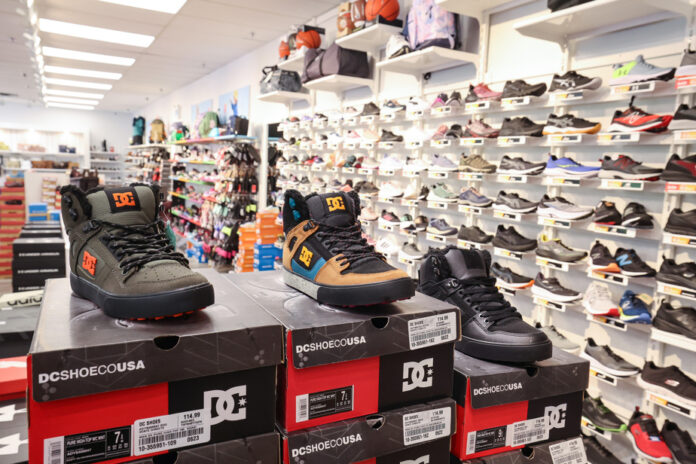Before COVID-19, it never occurred to retailers that they would one day have to deal with a shortage of wood, bikes or cross-country skis. And yet it is this scenario that they experienced during the pandemic. Nearly four years later, after the reign of empty shelves, stores are once again teeming with merchandise.
While there is no longer a shortage of inventory in store and the supply chain seems well-oiled again, it is the dire need for labor as well as consumer concerns about inflation that differentiate the current year of the pre-pandemic period.
In many ways, 2023 marks a real return to normalcy in stores. The year compares to 2019, according to retailers surveyed by La Presse.
Shortage of charcoal for the barbecue, bicycles that store employees don’t have time to assemble because of the impatience of customers in a hurry to go ride, bags of flour that disappear from the rows of groceries in a few seconds, the shortages that marked the pandemic… and the imagination of consumers seem to be a thing of the past.
“We are almost back to normal life, observes Cédric Morisset, president of La Cordée. The outdoor boom is a bit behind us. There is no longer just that to do. Other activities like soccer tournaments and trip to Walt Disney have resumed as in 2019.”
“There are no more delays or stock shortages,” confirms Richard Darveau, president of the Quebec Association of Hardware and Building Materials (AQMAT).
Thus, the supply chain, victim of many upheavals, is once again well oiled, according to Paul-André Goulet, owner of 10 Sports Experts stores. The sandals arrived in time for summer and Mr. Goulet is already receiving his merchandise in preparation for the start of the school year.
Sales have also reached those recorded in 2019 and even more, we are assured by Sports Experts, but also at Pop Shoes and Go Sport.
According to figures provided by AQMAT, hardware store sales for last spring are comparable to the same period in 2019. Between the two, merchant sales obviously jumped spectacularly, since the pandemic created a enthusiasm for renovations and exterior fittings. However, profits are lower this year than four years ago, notes Richard Darveau. “Margins are squeezed due to higher cost of goods and 20% higher wages and benefits. »
During the pandemic, many people escaped the gloom by getting on their bikes. The increase in sales and the difficulty of finding them from 2020 are proof of this. But has that enthusiasm now run out of steam? Are we back to sales levels equivalent to 2019? Hard to say. Cédric Morisset, of La Cordée, sees more of an increase in demand for accessories surrounding cycling. “Our parts and accessories are in high demand. The helmet is broken, there is a broken pedal. »
Paul-André Goulet points out that the enthusiasm for two-wheeled vehicles is greater than in 2019, but less intense than during the pandemic.
On the other hand, a newcomer has entered the landscape this year: inflation. As a result, consumers are even more cautious than they were before, in 2019.
“Now people are more concerned, also adds Paul-André Goulet. I can’t wait to see the alpine ski sales. And what will happen with the small weekend at Tremblant which costs $2,000 with tickets and hotel,” he illustrates.
“The impact of mortgage payments is greatly underestimated. We feel an influence on the behavior of customers in the store. »
And this caution is also palpable in the supermarket. “I was processing more milk in 2019. We reached the breaking point in terms of price. People are turning to cheaper cheeses,” says Luc Boivin, General Manager of Fromagerie Boivin.
If there are no more empty shelves, the shortage of employees is felt directly on the floor. Although the phenomenon did not start during the pandemic, the lack of labor is much more glaring this year than in 2019.
“It seems that in 2019, we did not see her yet, even if she was showing up, recognizes Claudie Laroche. We may have had our head in the sand in 2019, we didn’t see it that much, but here we are right in it. In stores, it is very difficult. The owners are out of breath. »
“It was less bad in 2019, also supports Luc Boivin. We had a lot of people who were eligible for retirement, but who were not taking it. But there was the pandemic, people learned to quit and they got a taste for it. So we lost a number of good employees. »
This is the transportation cost that Fromagerie Boivin expects to pay by the end of the year in order to transport its cheese to Centre-du-Québec and Montreal, nearly double what the company was paying in 2019.
The price of 200 gram bags of cheese curds from Fromagerie Boivin sold in grocery stores has increased by 10% to 25% between 2019 and 2023.





